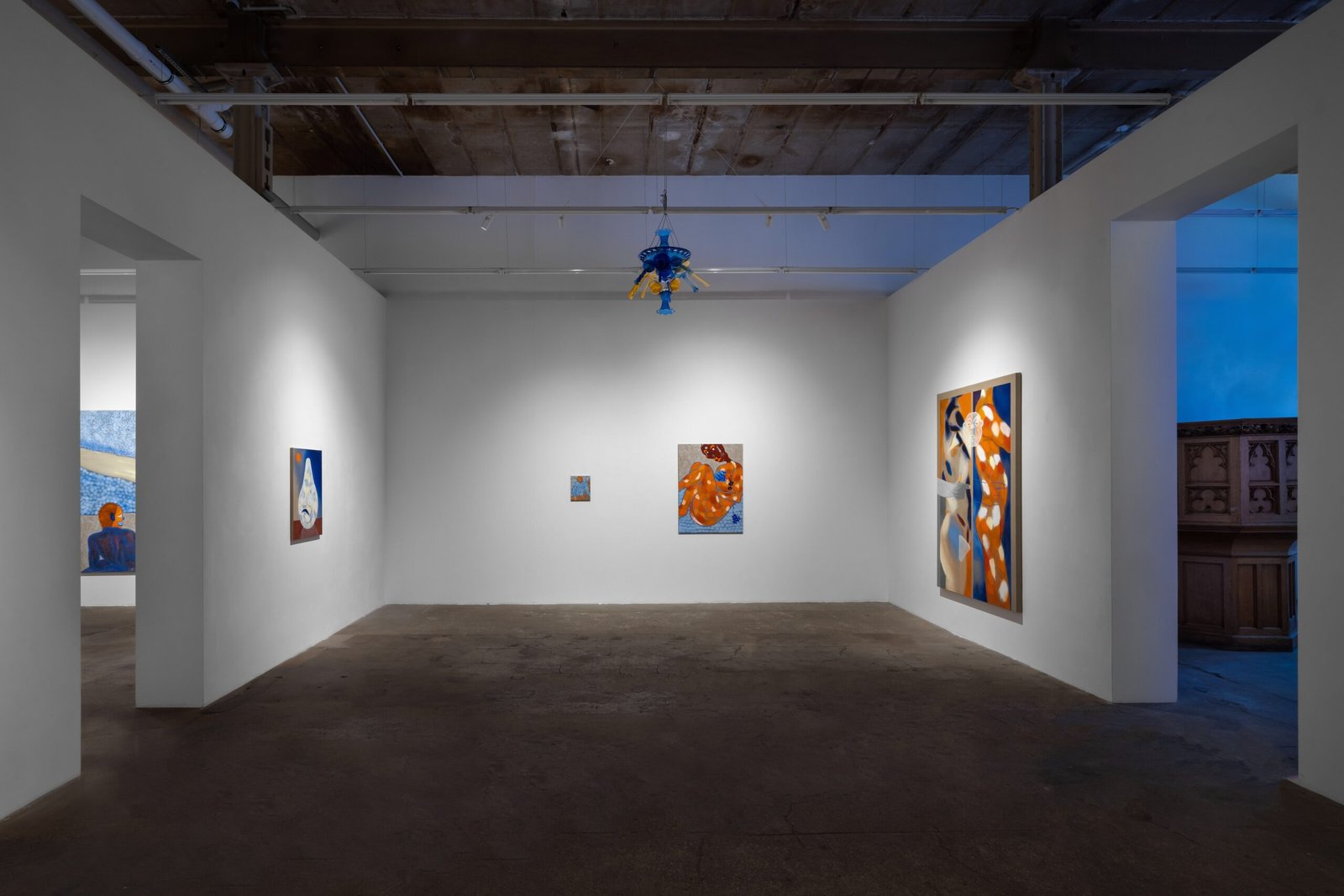
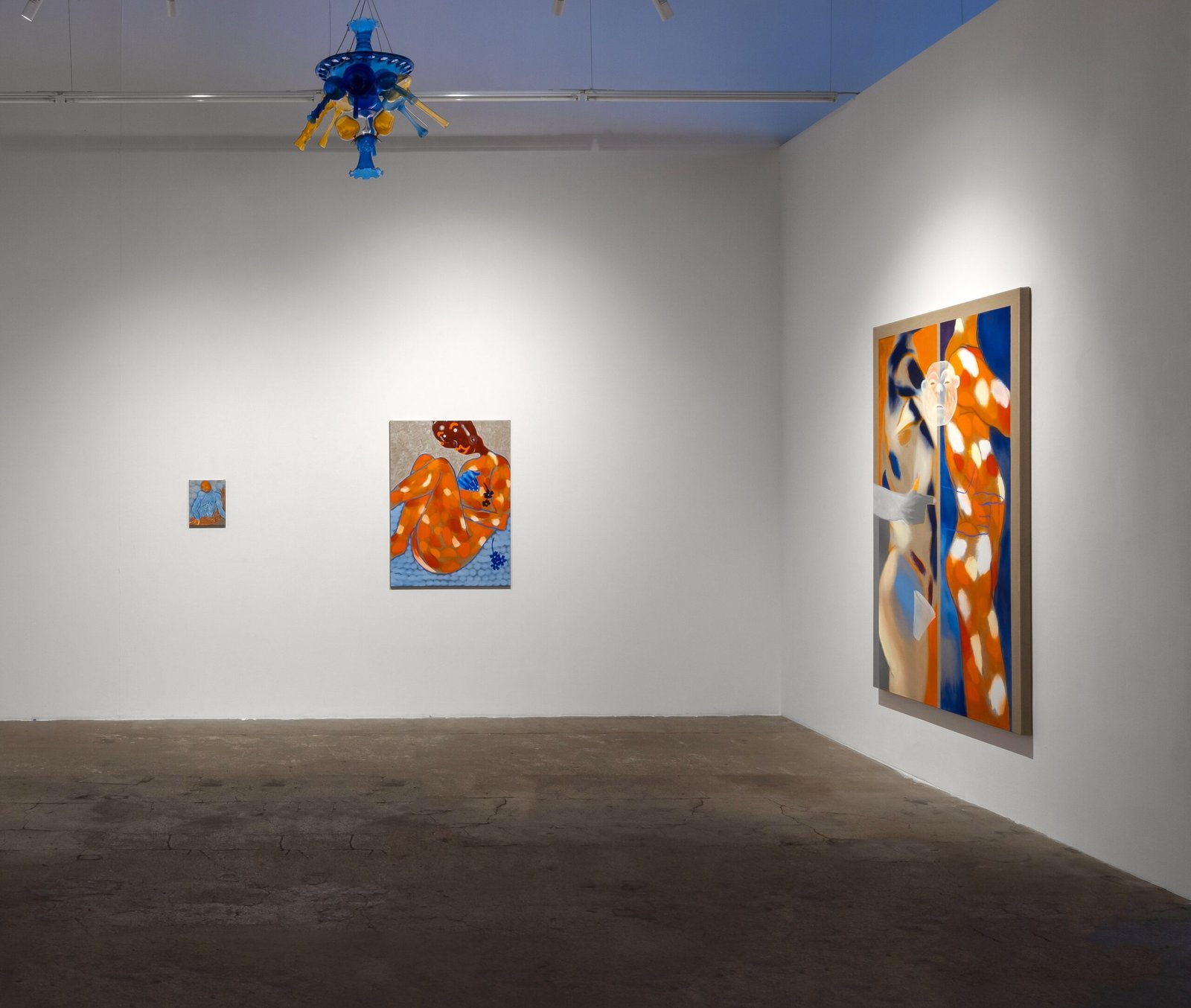
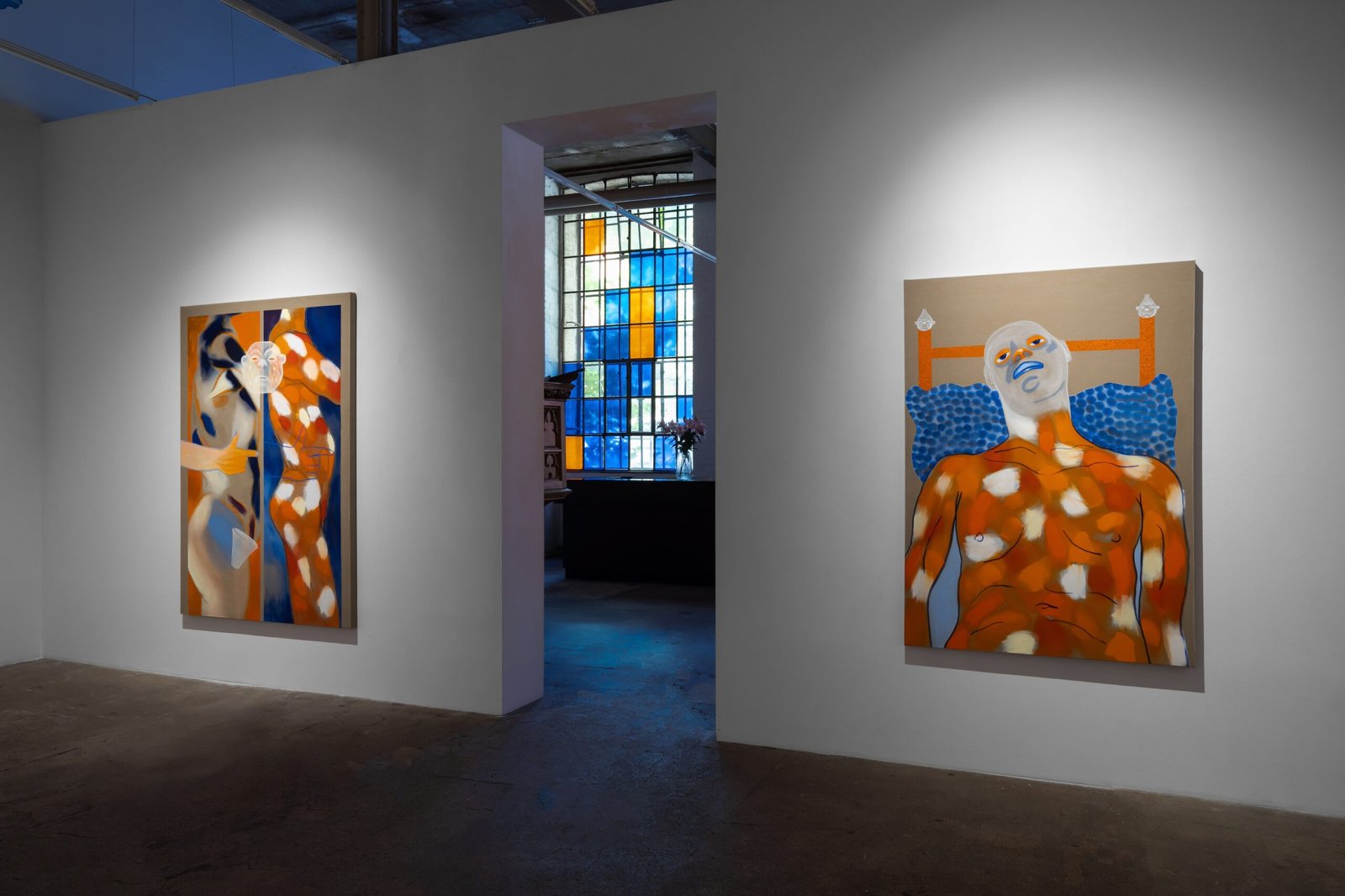
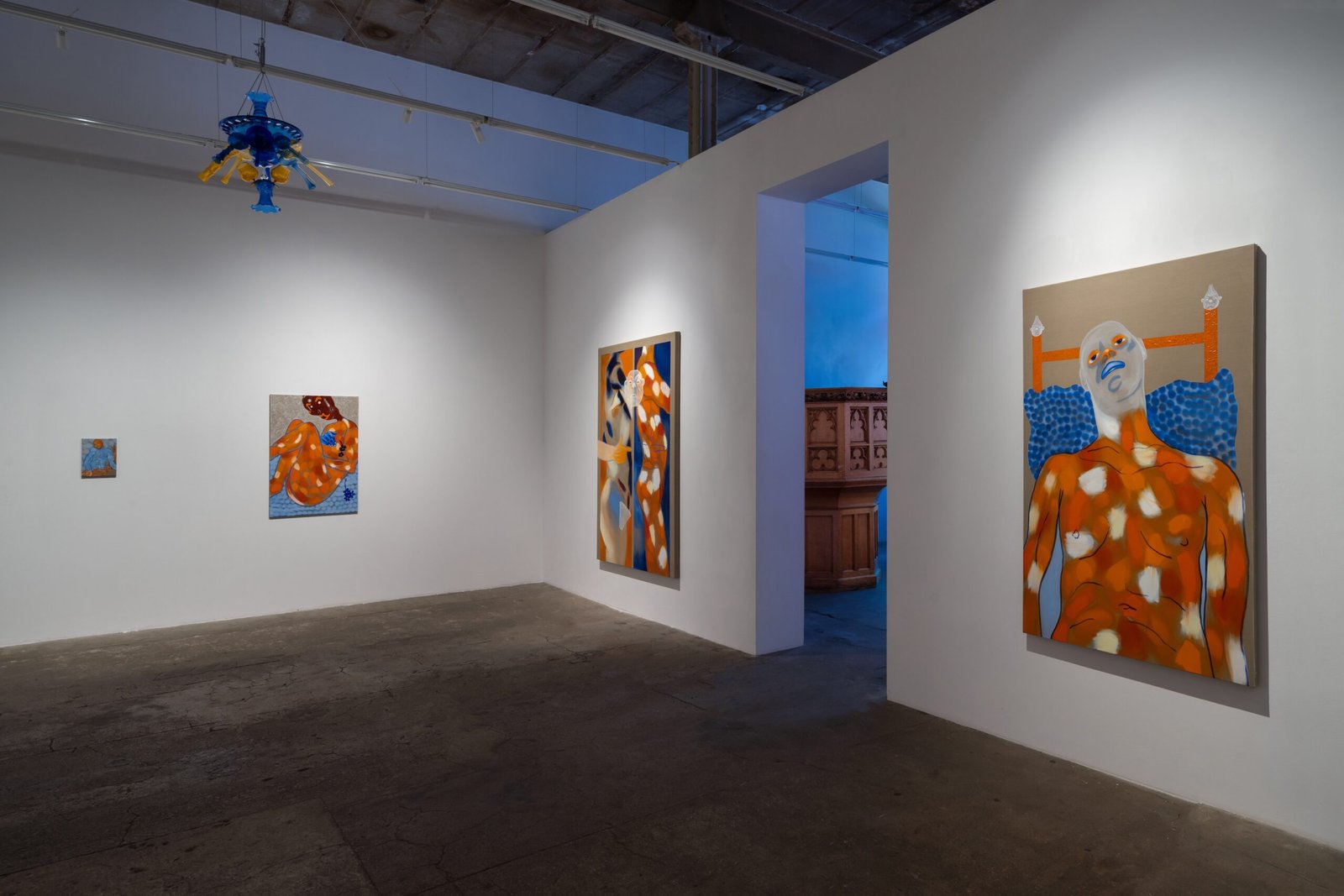

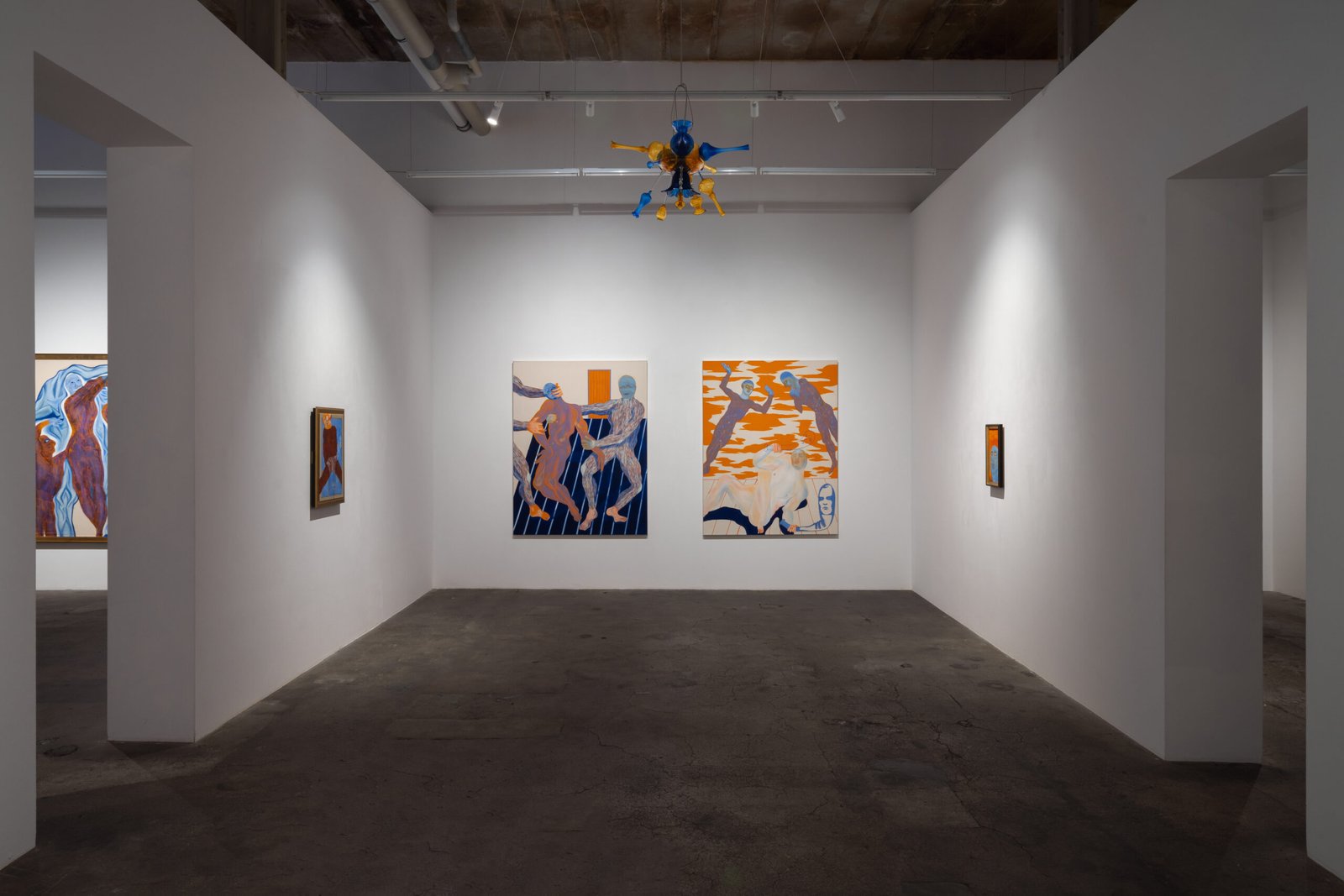

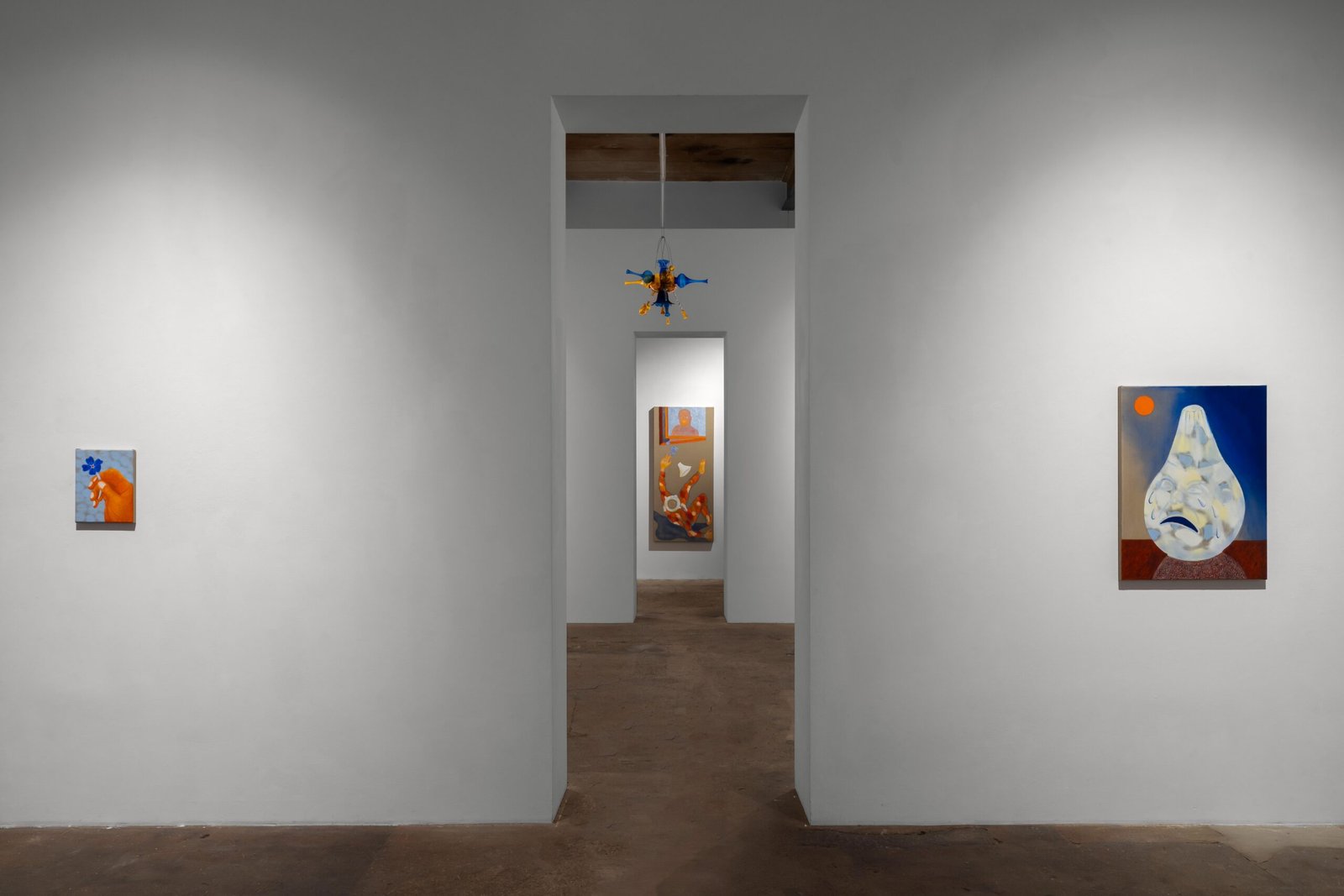

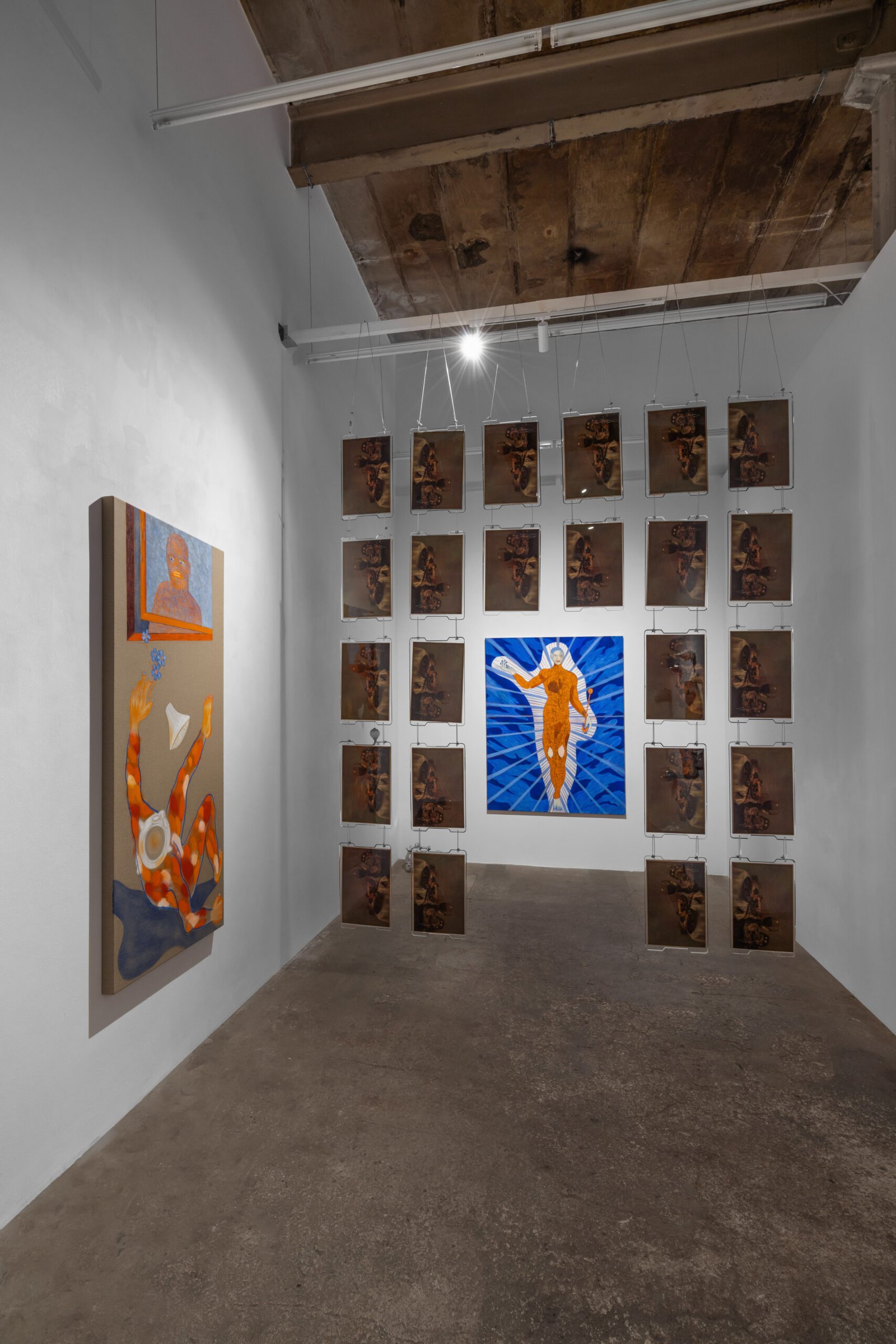
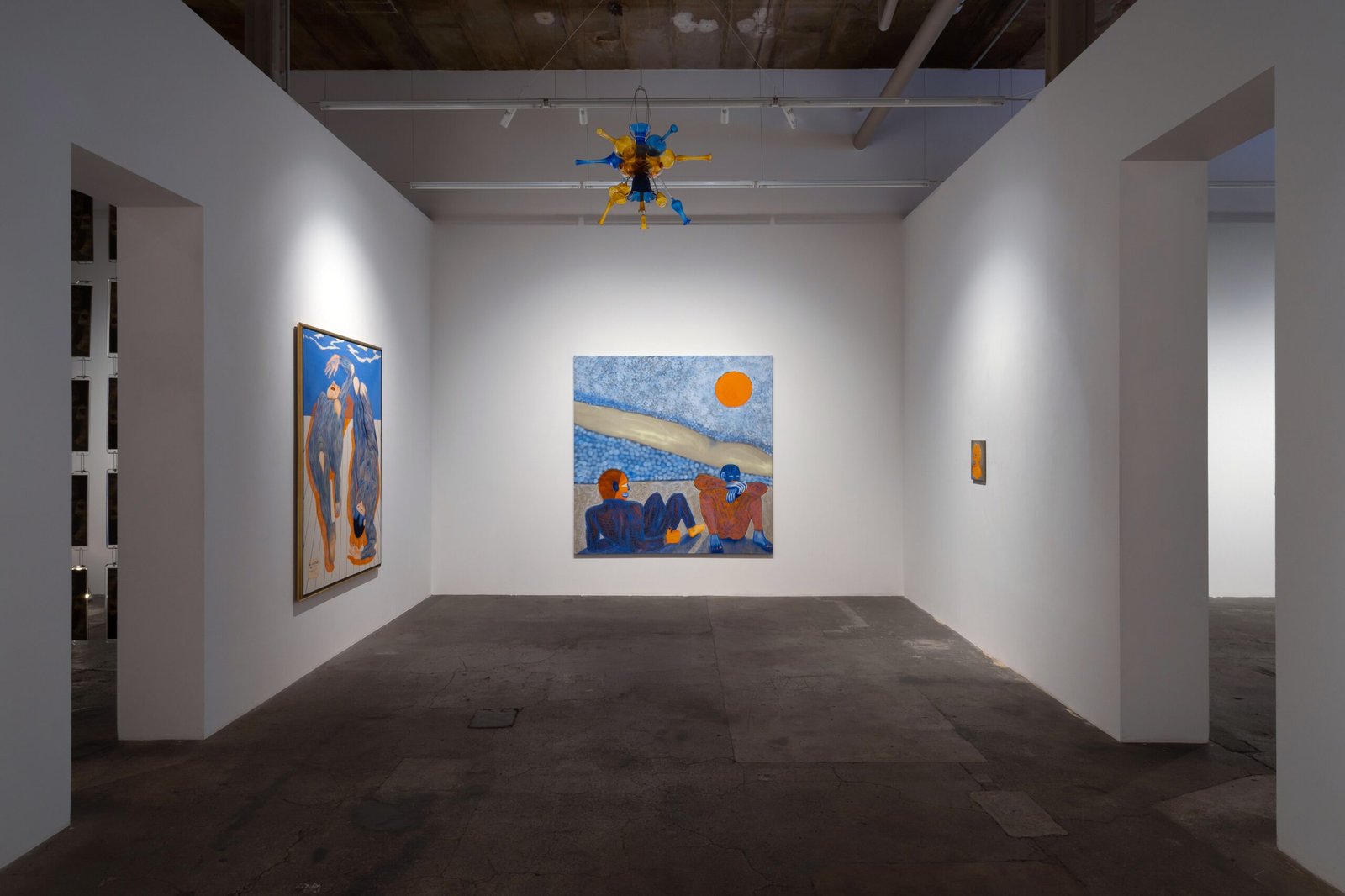
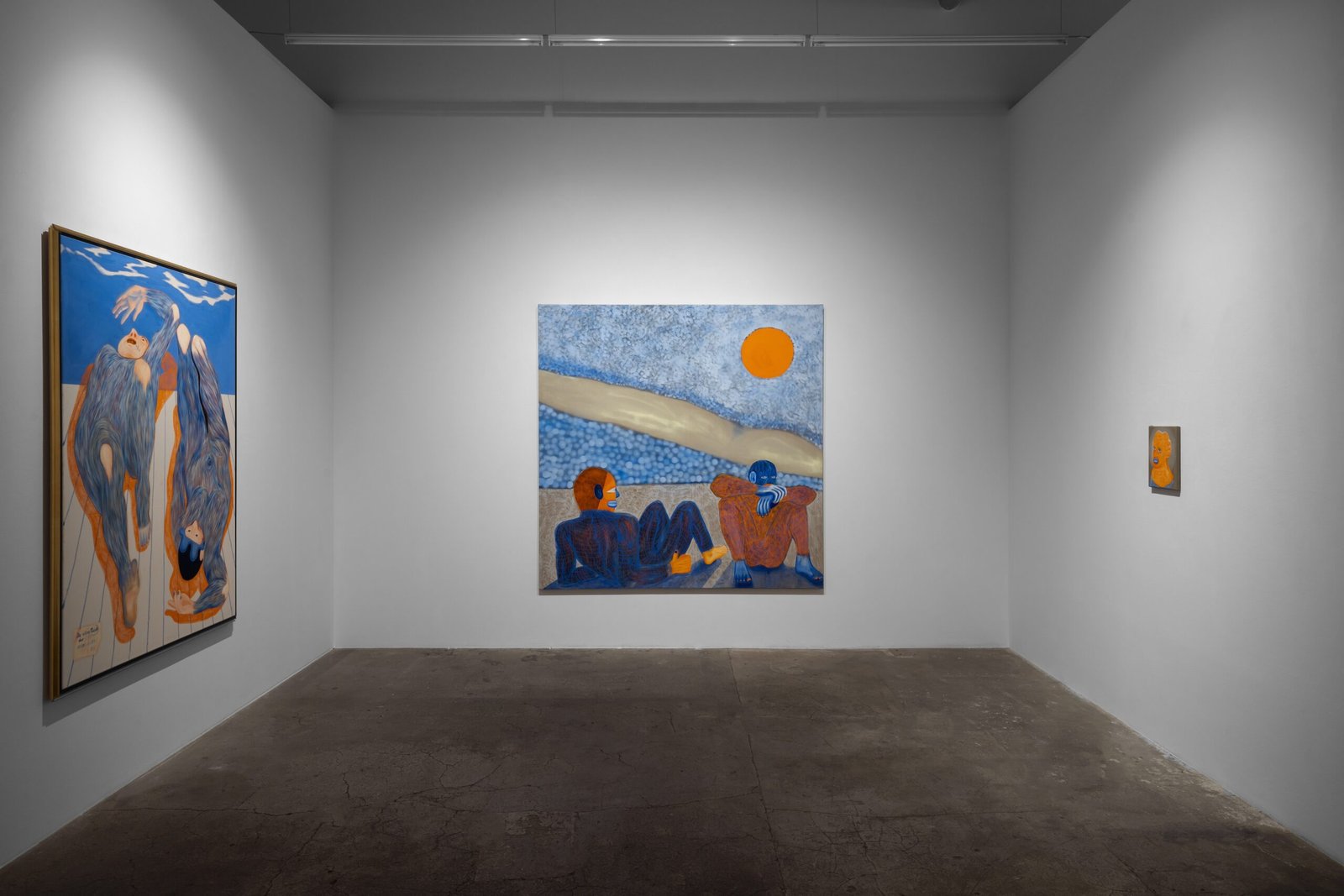



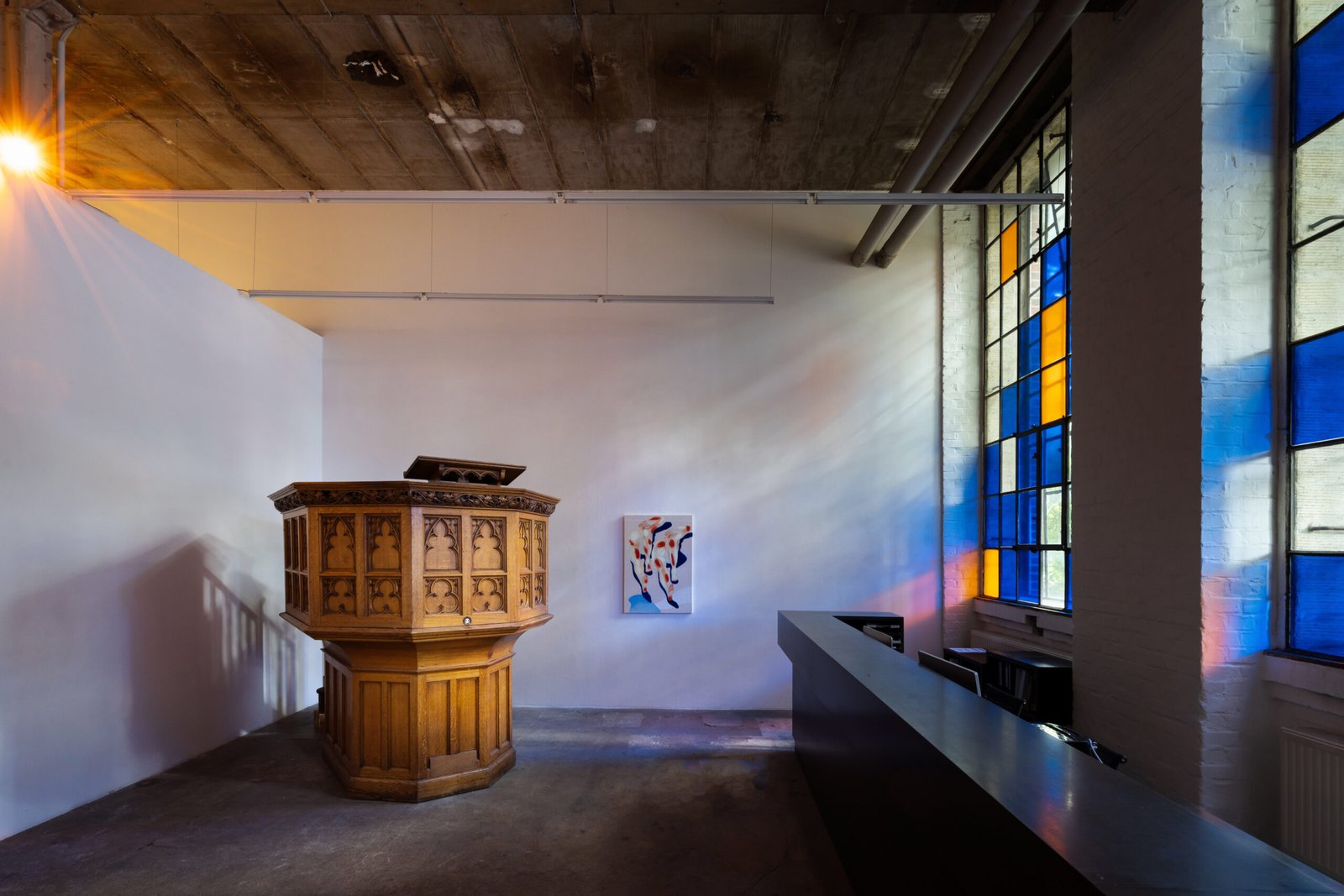
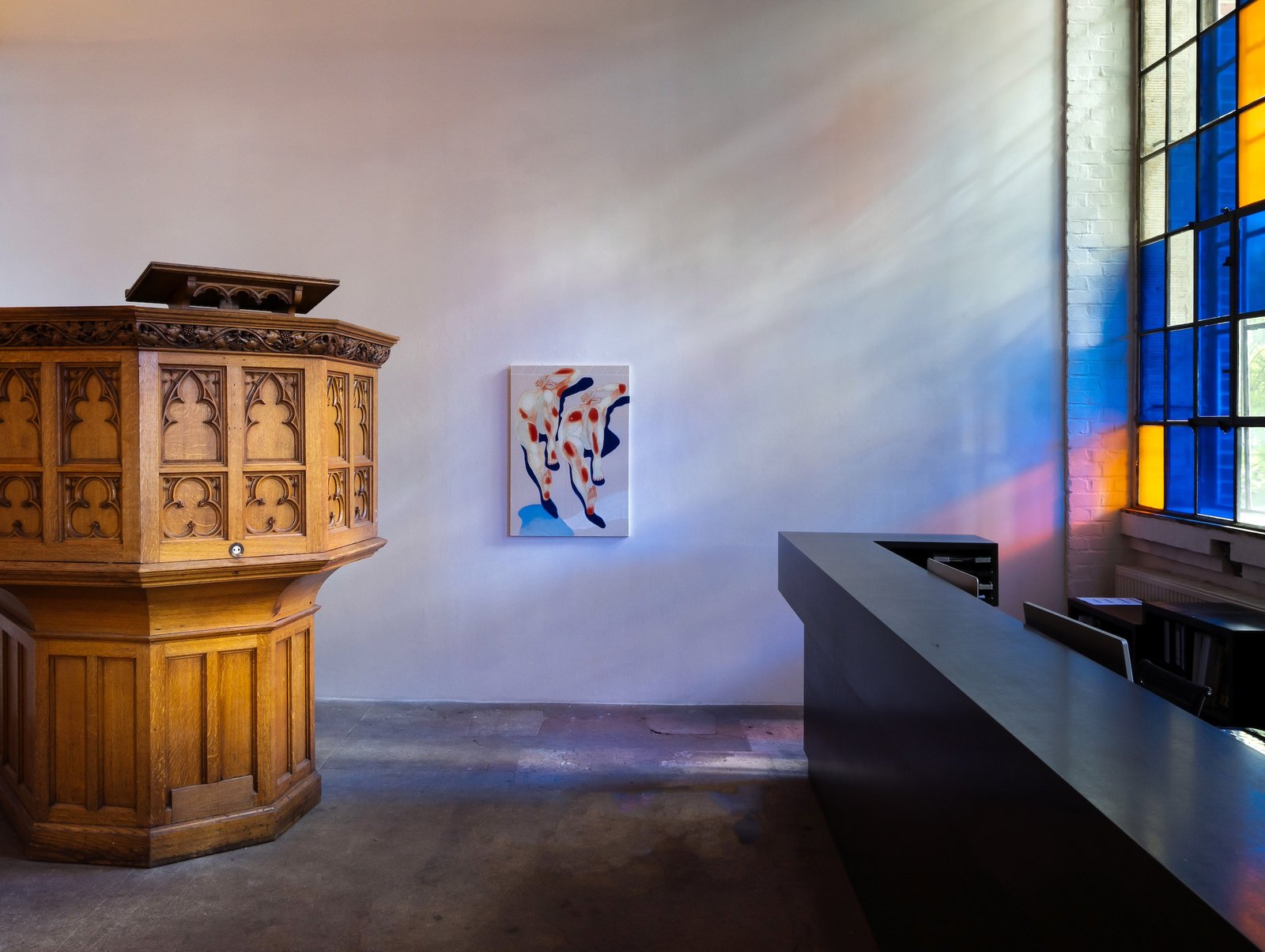
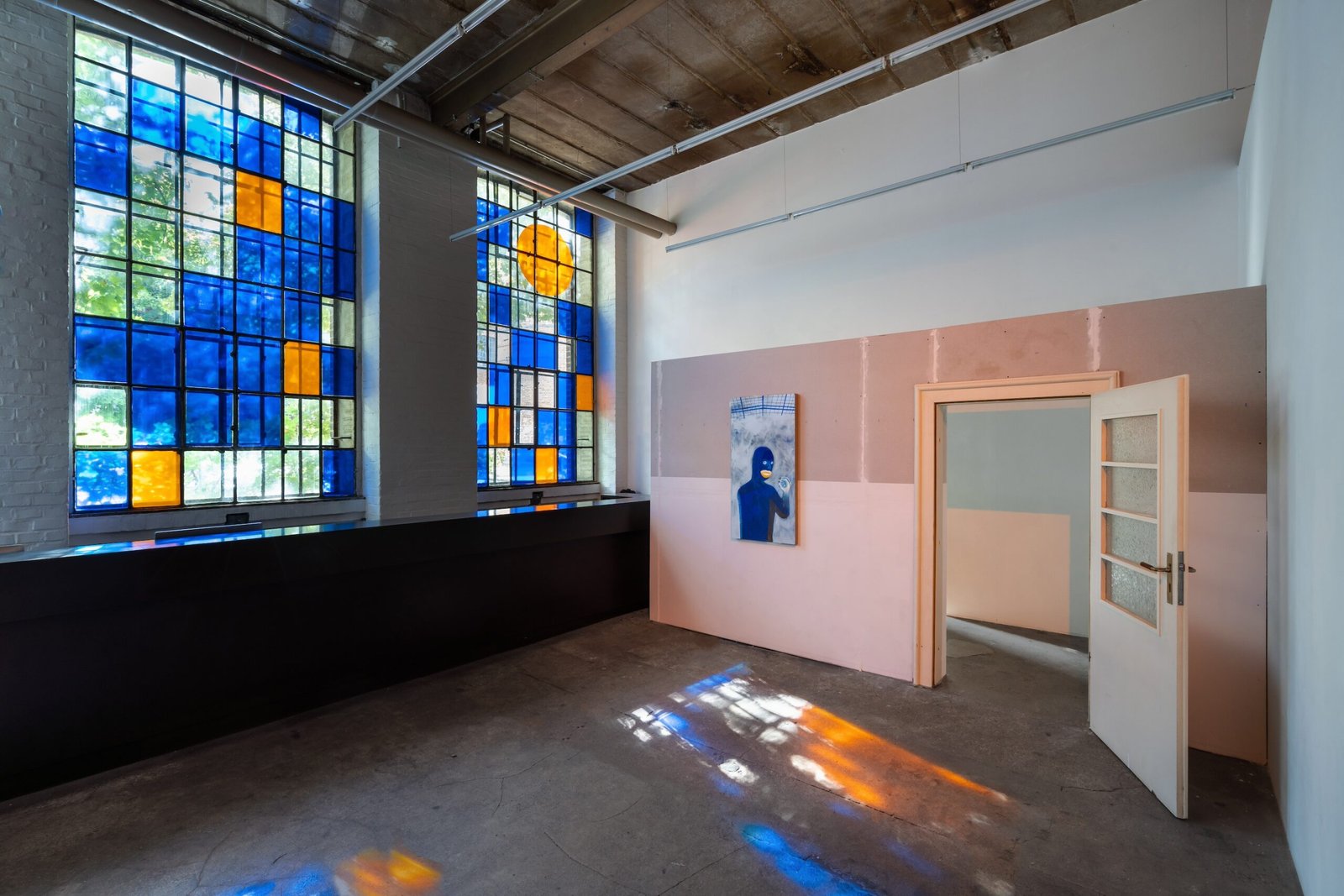

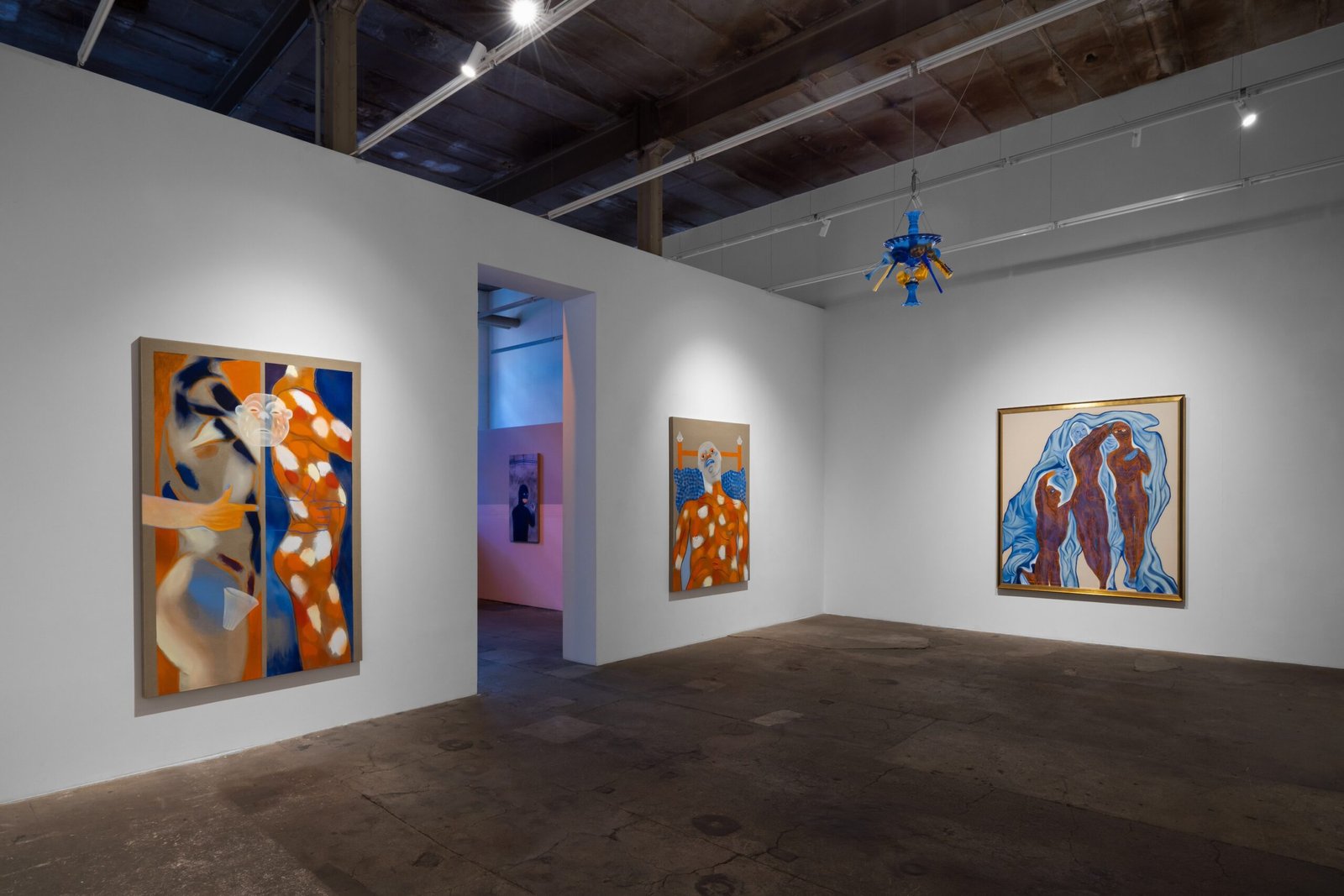
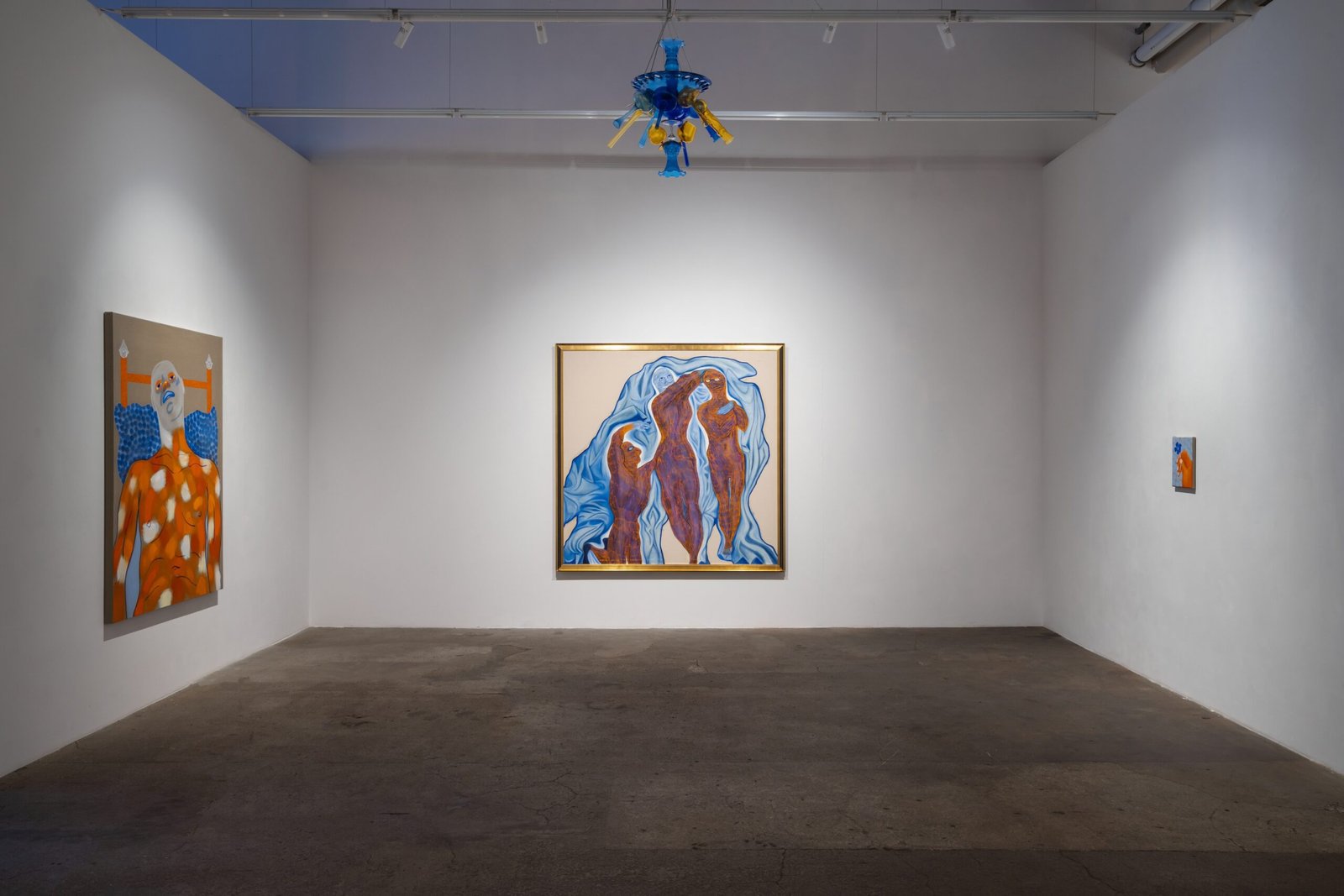
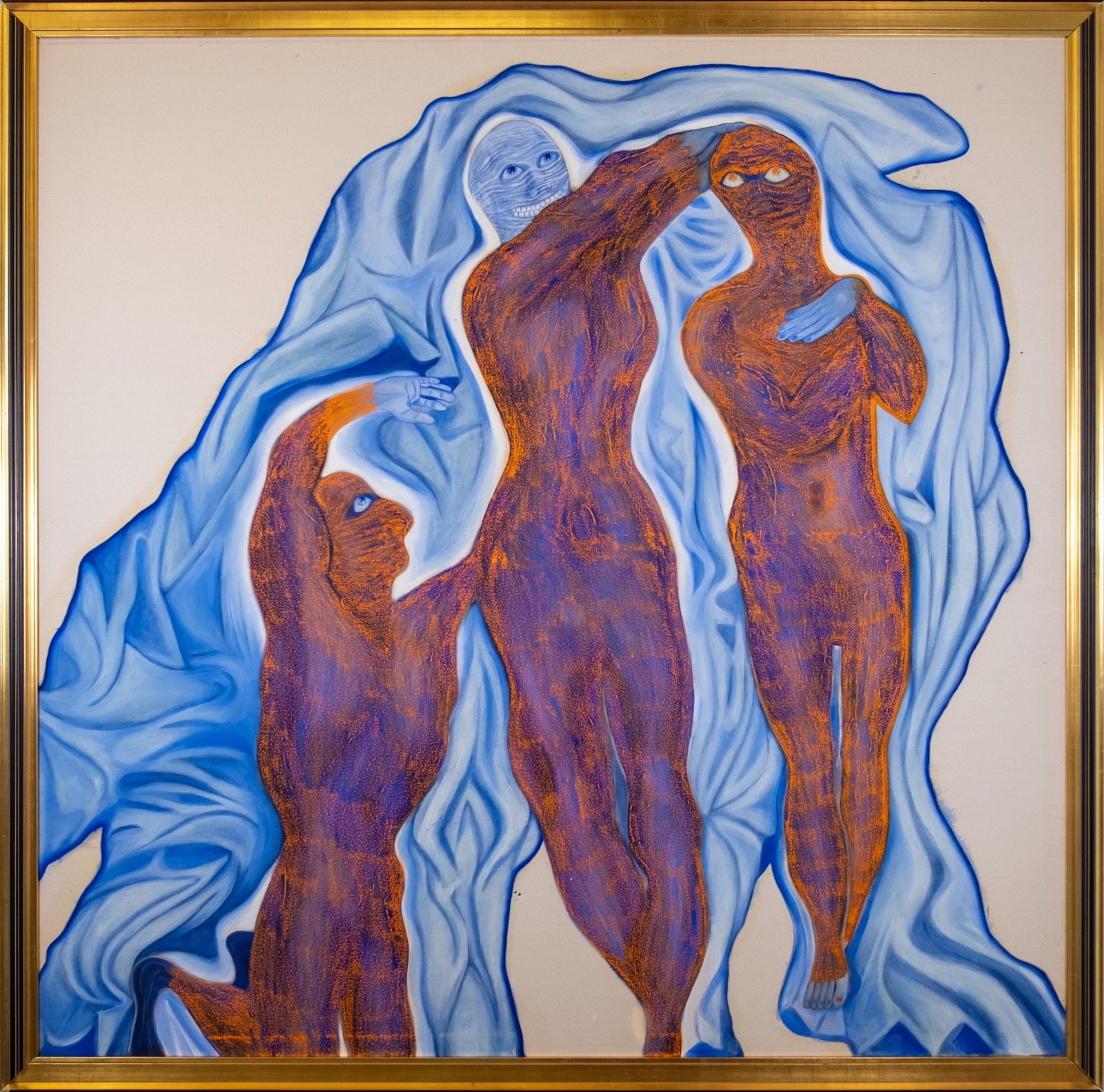
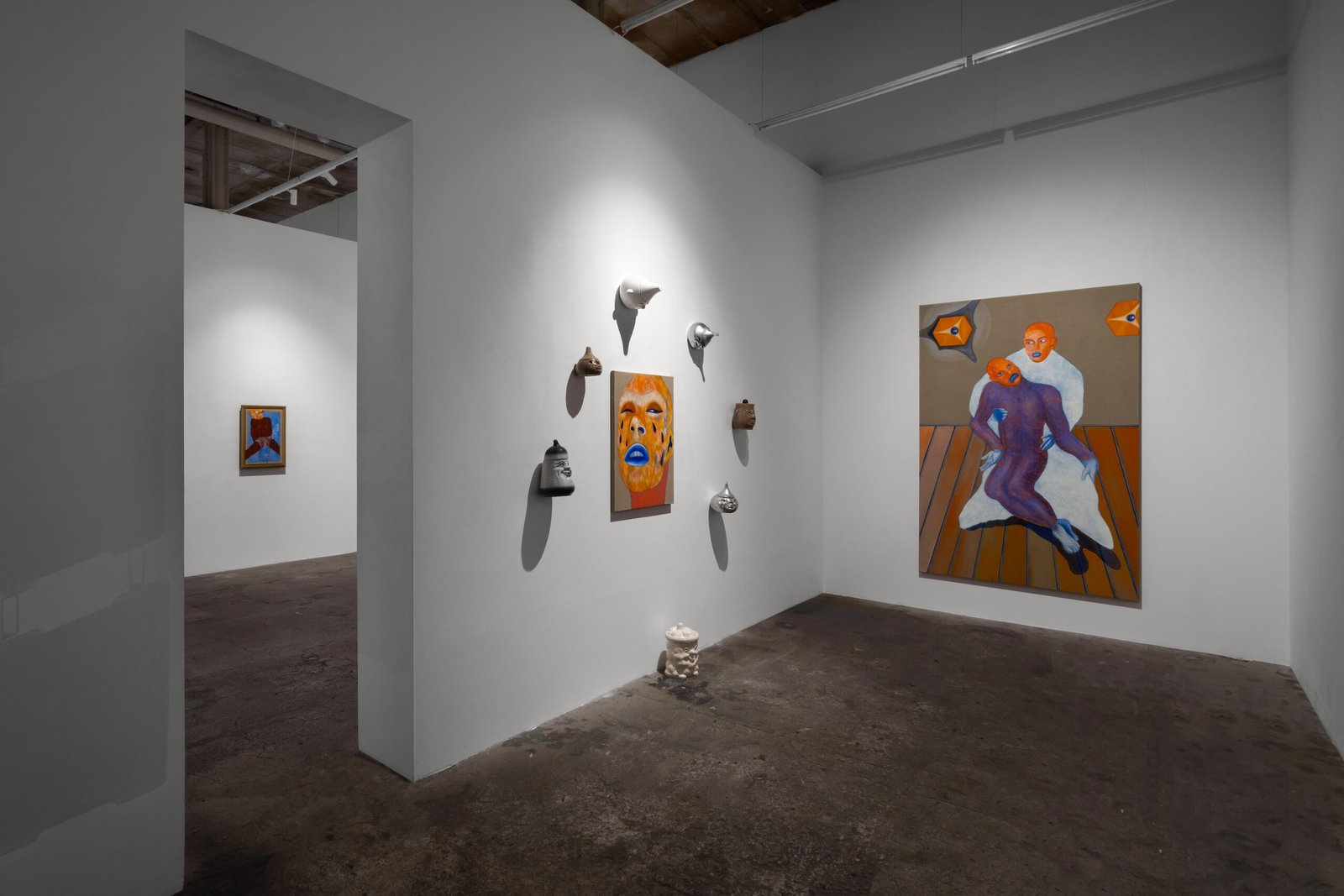

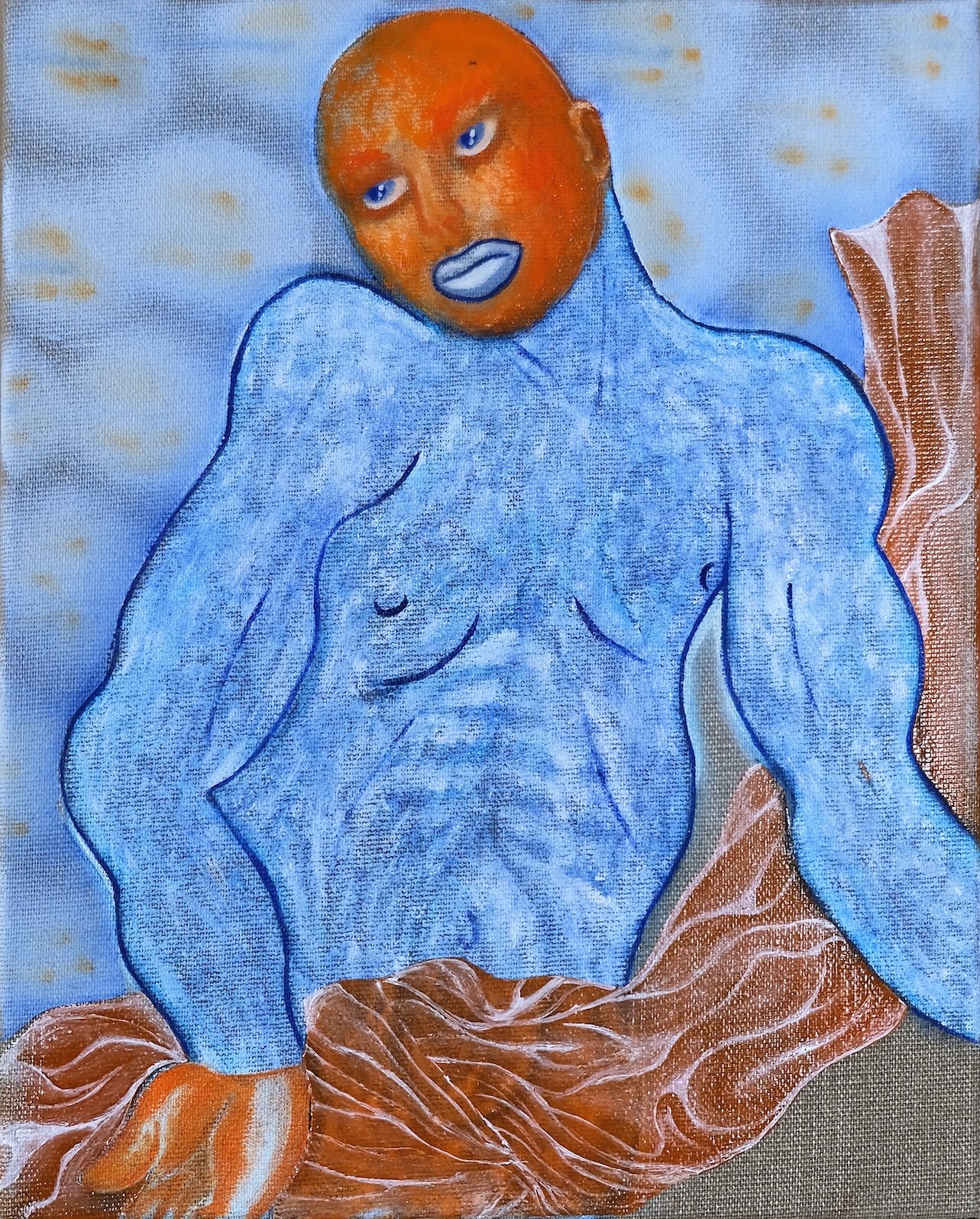
Silence has become rare. Spaces where one can gather one’s thoughts are even rarer. In his new solo exhibition ‘Botox,’ Paul Glaw unfolds an installation setting that conceives of the art space as a protective space – not as a retreat into the private sphere, but as a space of possibility for collective memory, pause, and visions of the future. Inspired by the role of sacred spaces in the GDR, especially churches as places of spiritual opposition and quiet resistance, Glaw designs a contemporary version of this space for reflection: a secular chapel beyond religious connotations, but full of atmospheric density. The gallery thus becomes a contemplative counter-space in an over-accelerated world – a place that allows for exhaustion, endures ambivalence and renegotiates presence.
Botox treats visible and blurred traces. It plays with the smoothing and erasure of history, experience, memories and age. Paul Glaw counters this with a visual language that understands memory as resistance. His painting hesitates, breaks off, overlaps. Colours, especially the blue and orange in his works, become carriers of inner tensions, codes of a personal and at the same time collective space of experience. Ambivalence is not only an aesthetic, but becomes a method. Narratives overlap, identities flicker, the visible always remains an echo of the hidden. The painting deals not only with questions of visibility and representation in terms of content, but also in terms of form. The mode of representation is always related to the question of how history is told – and by whom.
At the centre is a biographical perspective that draws on experiences in East Germany – fragmentary, tentative, deliberately without any claim to reconciliation or conclusive interpretation. Paul Glaw, born in Halle (Saale) in 1988, dedicates his artistic practice to those social realities that lie in the field of tension between individual history and collective self-description. His works are not mementos, but open questions: Who speaks? Who is heard? Which images of history remain, and which disappear quietly?
In ‘Botox,’ another layer is added. Inspired by the role of sacred spaces in the GDR, especially churches as places of spiritual opposition and quiet resistance, Paul Glaw designs a contemporary version of this space for reflection. A secular chapel, beyond religious connotations, but full of atmospheric density. His own iconography oscillates between personal memory and collective narratives, between pictorial directness and symbolic superimposition. Despite its conceptual density, Glaw’s work always remains sensual. His painting is figurative without losing itself in narration. Bodies appear, are fragmented, collide with surfaces, disappear again. In one of the paintings, a figure with an onion pot crashes through the picture plane – a moment between banal gesture and symbolic charge. It is such breaks between everyday life and abstraction that keep his painting open: to legibility, but also to resistance against unambiguity. In particular, the strict adherence to bichromatic colour coding serves to intensify the atmosphere and to reflect precisely on identities, change and the fragile construction of history.
Glaw creates an installation setting in which the material itself becomes the vehicle for the narrative. The reappropriation of East German craftsmanship through decorative glass objects, assembled into new sculptures, is an artistic act of establishing relevance. Forgotten knowledge—aesthetic, craftsmanship, cultural history—becomes a resource. Not backward-looking, but as an impulse for remembrance. What happens when cultural development arises not only from the new, but also from re-examining the old? The creative further development of the material history of Lauscha glass is a conscious act of opening up against any narrowing of identity.
BOTOX is not a retrospective view; the exhibition operates in a mode of condensation, friction, searching and pausing. It opens up a complex, polyphonic examination of history, identity and memory, of art that does not smooth over but keeps traces legible, of spaces that protect without closing, and in doing so emphatically asks: Which narratives dominate our cultural memory? Perhaps memory begins anew precisely where we stop smoothing it over.
Text Author: Lara Popp (@larryp0ppins)
